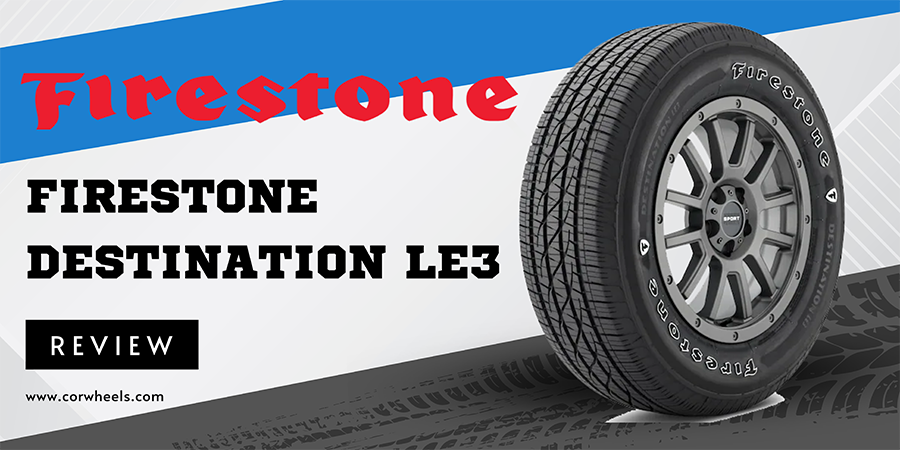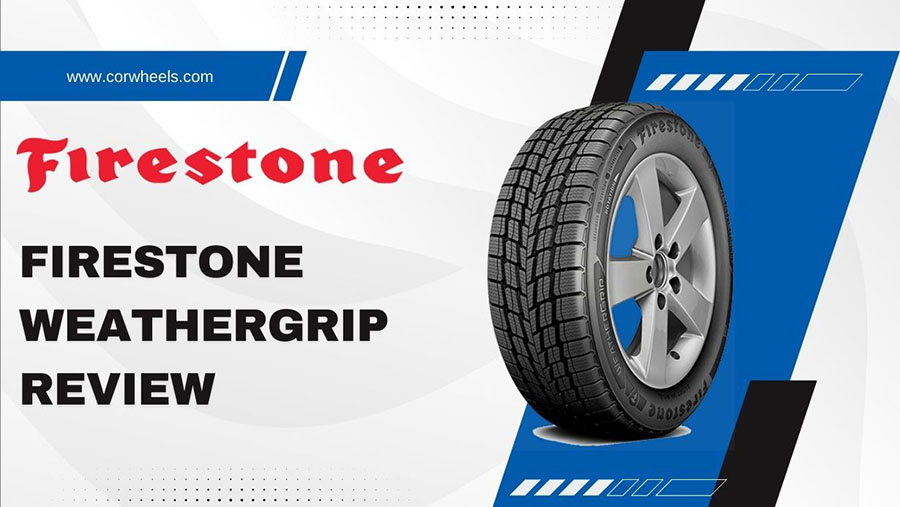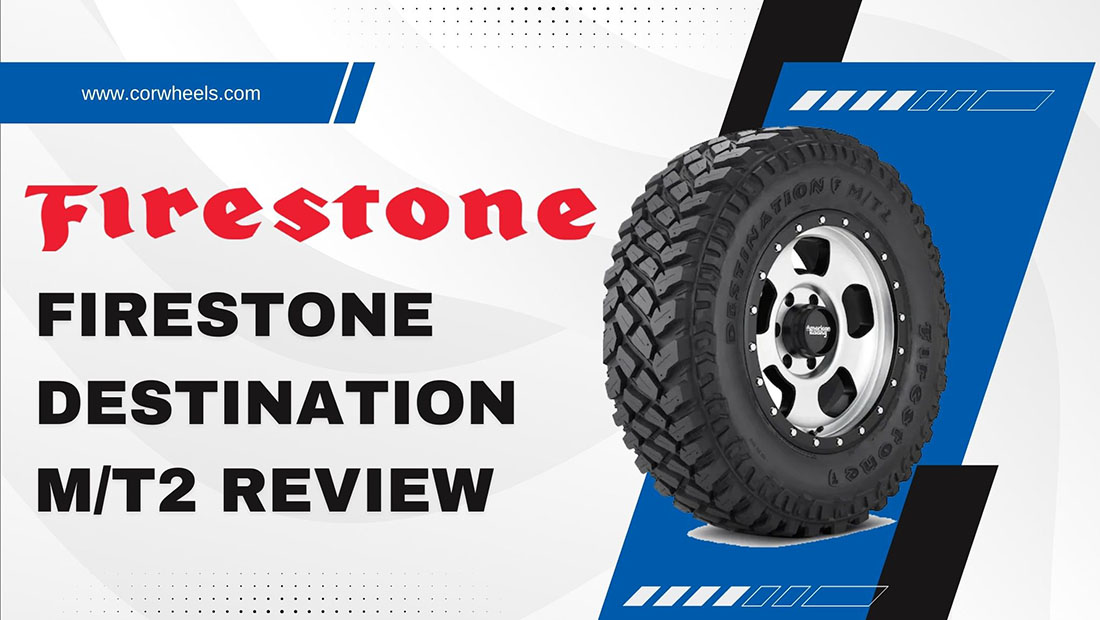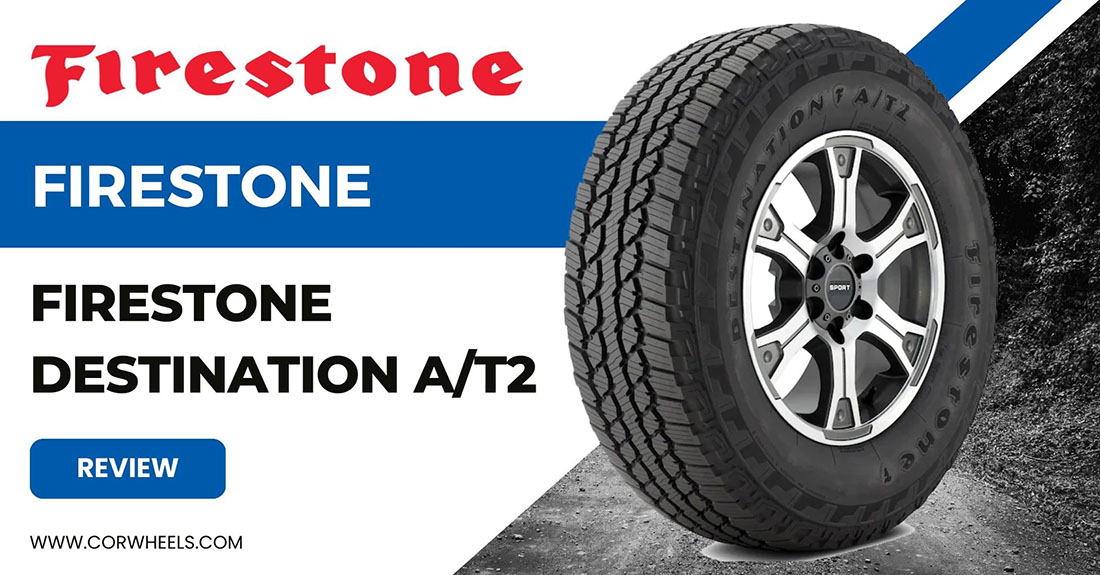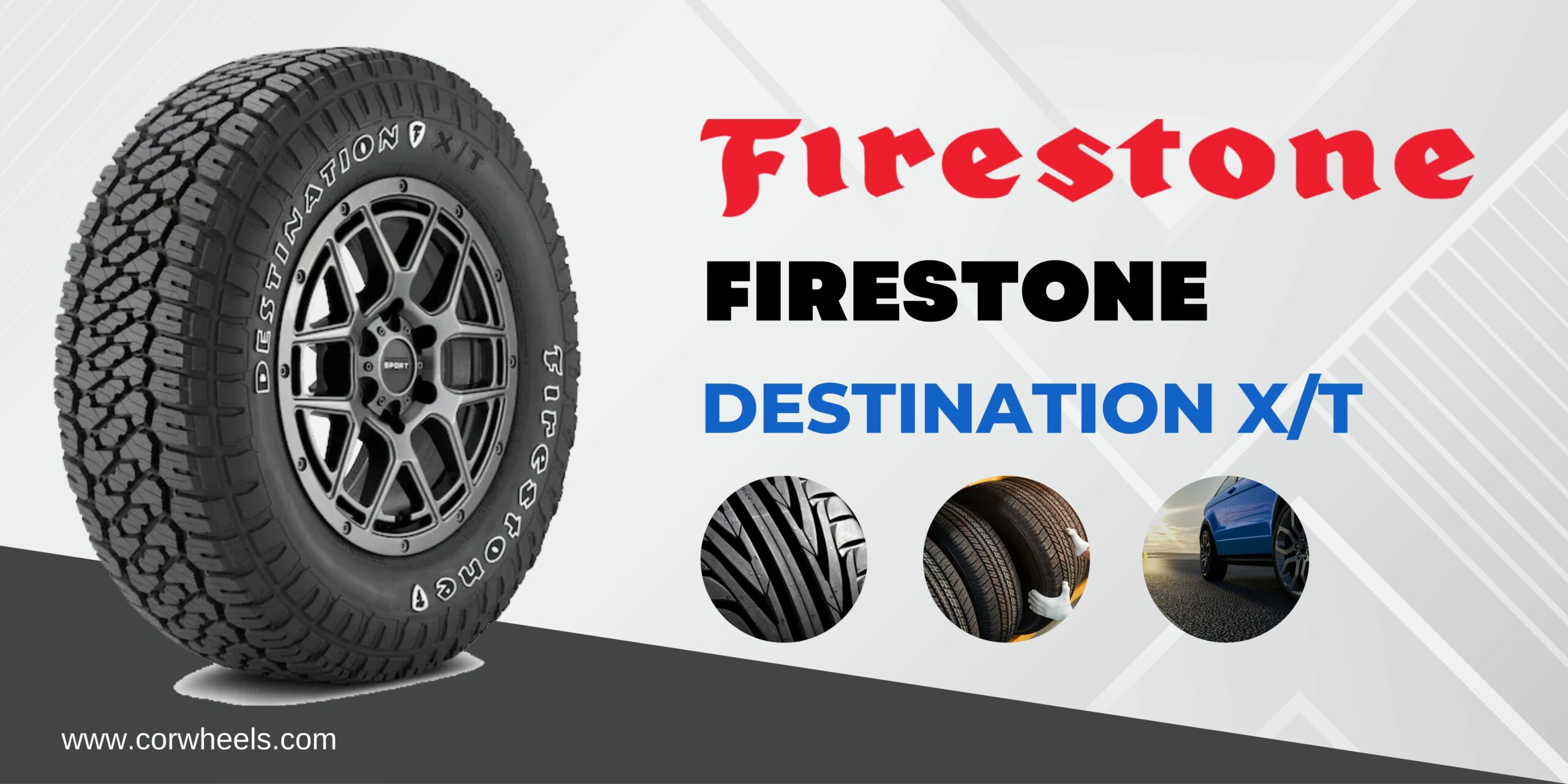Despite its simple design and a notable lack of modern upgrades, Firestone All-Season still receives lots of positive feedback as an entry tire, reportedly delivering pretty decent composure on dry roads.
Nevertheless, our COR Wheels Tire Test did reveal some new findings, which will be discussed in the review below.
In this article:
Firestone All Season Specifications & Features
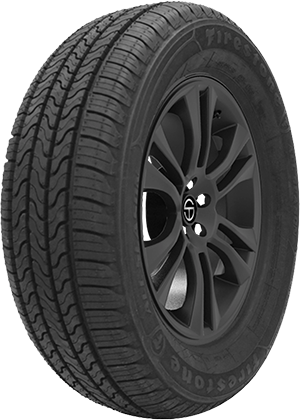
| Tire Type | Passenger All-Season |
| Tire Size | 14″ – 20″ |
| Load Range | SL |
| Speed Rating | – T: up to 118 mph – H: up to 130 mph |
| Warranty | 65,000 miles |
| Ratings | 6.5/10 |
Firestone All-Season is developed for drivers of crossover vehicles, family minivans, sedans, and coupes that seek year-round traction, good treadwear rates, and excellent riding comfort.
Some notable highlights:
- The silica tread compounds are molded symmetrically to foster better, more even rotation and treadwear.
- Four deep grooves guide water through channels to improve wet grip.
- Deep sipes create extra biting edges to handle light snow.
- One- or two-ply polyester casings (depending on sizes), two wide steel belts, and nylon reinforcement boost riding quality, stability, and durability.
Firestone All Season Review & Performance Test Results
During our 2023 COR Wheels Tire Test, our team used the 215/50R17 tire size version of the Firestone All Season on our 2022 Honda Civic car model across dry, wet, and snow terrains.
1. Dry Performance: 7.7/10
Dry Traction: 8/10
Our Honda Civic settled in as quickly as expected at 40 MPH and maintained decent momentum across our straight-line endeavors. Contrary to popular feedback, its tire-road connection was not always the sharpest (especially when we tried to correct our skids or recovered from brief stutters around roadblocks), but still sufficient for most basic driving situations. Even as a beginner, you should be able to reverse, apply mid-way changes, or even engage at sharp turns pretty well – given good preparation.
Accelerations towards 65-70 MPH were decent on regular streets. However, they started to reveal major hesitancy as our Honda moved towards highways; the sidewalls burnt out faster than most Firestone tires we have tested during extended curves, and traction losses were to be expected at tight entries. There was no real danger at play, but we had to pay attention to the tire’s reactions all the time to avoid panic chokes at ill-timing maneuvers.
Firestone All Season also showed quite a struggle on rugged cobblestone due to the lack of extra sidewall layers. The road’s inconsistent structures did not bond well with our tire despite low driving rates (below 40 MPH), only getting slightly better when we reduced our passengers to 3.
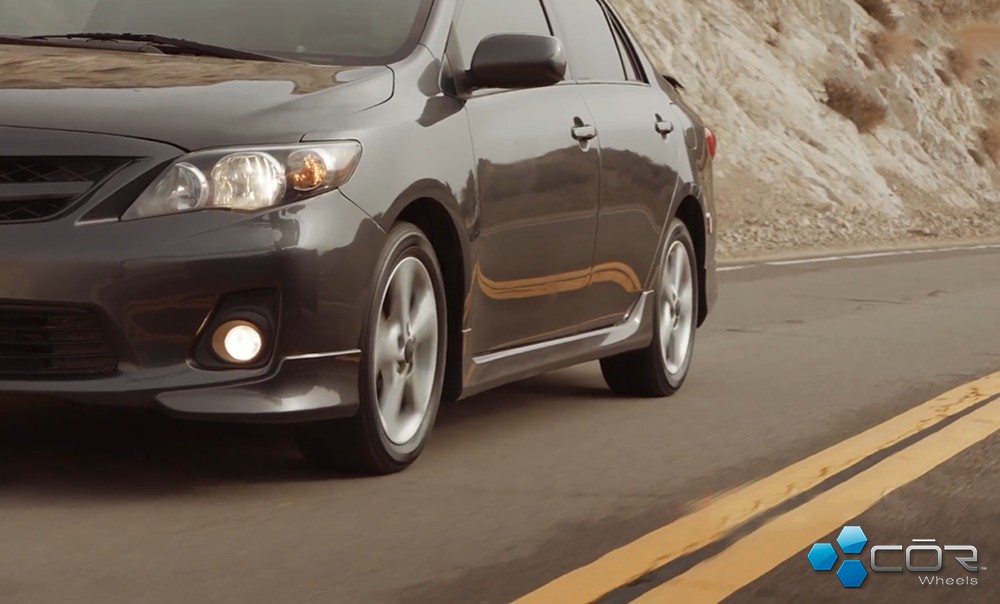
Corner Stability: 7.6/10
Wide, gentle corners were a non-issue for Firestone, though we still had to experience occasional slippage every now and then near the liner. The ribs also wavered in extremely short intervals when our Honda attempted zigzag switchbacks, so you should avoid dynamic handling or abrupt speed changes around such road sections.
Needless to say, tight hairpins and off-camber bends were clearly not meant for this Firestone tire, evident in the ominous hiccups around the flanks and fainter contact points towards the apex. On rougher terrains (e.g., gravel roads with thick debris), the lack of confidence became all the more obvious, forcing us to grind our wheels tighter than necessary to maintain decent cornering footings.
Steering Response: 7.7/10
Sure, Firestone All-Season obviously could not compete with premium touring models; but its steering response was admittedly much better than many rivals of the same sector, delayed within acceptable margins to ensure no accidents could occur. Except for critical emergencies where immediate tire flexes were required, the tire could actually deliver average to quick feedback upon most of our driving inputs.
The tire’s steering became weaker as we navigated on highways, but that is to be expected for almost any standard touring tire, not just Firestone All-Season. Given that the curves are widely spaced and entail no complex twisties, your car will handle them well at any speed rate below 50 MPH.
2. Wet Performance: 6.8/10
Wet Traction: 6.7/10
While Firestone All-Season still found itself among the top ranks, the way all of its dry confidence was stripped off to leave behind the barest hint of composure on wet, straight-line roads was still very disappointing. This all-season tire seemed to only reach its peak behaviors on very shallow puddles (preferably less than 2 inches) or drying slippery surfaces post-rain – and even then, occasional stutters still lurked around.
Any water depth beyond 3 inches sent our car into a literal nervous wreck, which kept messing its contact points every few minutes and could barely hold itself together around corners. Unless you prefer casual 20-25 MPH rides, aggressive speeds or directional turns are not welcome here.
Hydroplaning Resistance: 7/10
The inclusion of four circumferential grooves was far from enough to keep hydroplaning completely at bay: the water still seeped in startlingly fast, clinging there for minutes to drag this summer tire down during critical turns and tight curves. Firestone’s advertised “even rotations” were not present much during wet weather conditions, either, further paving the way for the heavy, bothersome drag that refused to go away even after miles.
Still, from a more positive viewpoint, the jostles and drifting got quite predictable after our sixth day of testing. When translated to longer usage, that means you can eventually get used to them over time and learn ways to prevent them before the situation worsens.
3. Winter/Snow Performance: 4.8/10
Light Snow Traction: 5.6/10
Given that Firestone All-Season has zero snow-focused features, its composure on light snow turned out to be much better than we expected. Spirited accelerations or tough courting were still dangerous (if not downright impossible in severe weather); but other than that, our car did not lose complete connections with the snow-covered roads and could still push itself forward – albeit not without slippage – at 10 to 15 MPH.
Snow chains helped us recover a little traction confidence at 15 MPH, but 20 MPH onwards still proved quite a stretch for the tire. Always keep your passengers and cargo at a minimum, and for longer trips, pull over every 30 minutes to give the sidewalls some time to rest.
Deep Snow Traction: 4.9/10
Firestone’s horrid footings on deep snow were unsurprising; even the most experienced and physique-competitive members of our team could not gear the car towards the right track through strong push-pull and palm-to-palm steering. Our attempts to bind our car in snow chains (all four tires) barely helped, either, if not lagging even worse around corners and across steep, angled surfaces.
Removing all passengers and luggage did bring back a bit of sure-footed stability on more well-paved roads, but it was hardly noticeable due to the brief yet frequent sidewall protests. Unless your car is equipped with excellent aftermarket upgrades, avoiding deep snow terrains altogether will be the safest bet.
Ice Traction: 4/10
Needless to say, our test rides had to stop short after more or less than 1 mile on icy surfaces; the tire could not complete a strike without major squeaking and fumbling, even downright plummeting when our drivers tried to compensate for the traction losses with stable and consistent hand-over-hand control.
Extremely low driving rates (5 MPH) could tackle the traction issue to a certain extent – but by that point, it would be much better if you just simply choose another iceless path.
4. Comfort: 6.7/10
Ride Quality: 7/10
Firestone All-Season left lots of room for improvements in terms of impact handling: even the slightest road crack resulted in dragging vibrations, which still lingered long after we moved to another road section. And as mentioned, the higher the speed, the more unstable it became – though thankfully, a good wheel or steering upgrade could help you mitigate the issue to a significant extent.
Noise: 6.4/10
Noise control was the worst. Squeaks and protests were inevitable at corners and curves, but even our casual ride through straight roads could not rid the tire of constant, loud tread noises. You should also brace yourself for the unexpected skidding sounds on rugged road textures or during hard braking.
5. Tread Life and Durability: 6.3/10
The symmetric pattern compounds, despite the brand’s claim, could barely hold their composure against weather extremes, even slightly lower temperatures during summer rain seasons. Debris, nails, and small objects also left quite a blatant dent on the tire’s top; fortunately, the generous 65,000-mile warranty could make up for it to a certain extent for at least the first five years.
Firestone All-Season Pros & Cons
Pros
Pretty good traction on dry surfaces
Decent cornering and steering on well-paved roads
Decent hydroplaning control
Good warranty (65,000-mile limited warranty)
Cons
Not much wet-road confidence
Horrid on deep snow and ice
No quiet rides
Short treadlife
Conclusion
Compared to premium grand touring models in the all-weather tire industry, what the tire showcased in our Firestone All-Season tire review clearly proves that it is not the best performer.
But it still ranks above numerous standard touring tires of the same pricing range regardless, a good choice for casual drivers with little to no speed demands during daily driving situations. Avoid using it in heavy rainfall or as a winter tire during snowy conditions.
President & Automotive Expert at COR Wheels
Robert Herrera has been with COR Wheels for 17 years and has a great passion for the automotive industry. During his time at COR Wheels, he has driven and test-driven a variety of vehicles.







